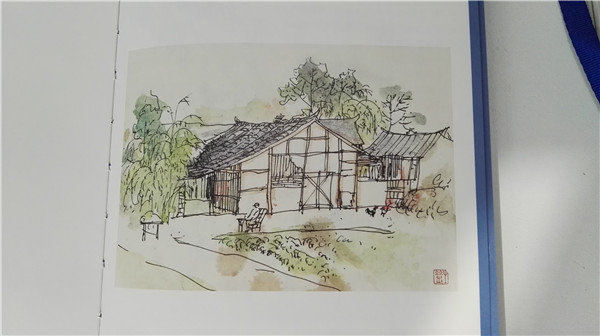 |
|
The book Linpan features a lot of photos and illustrations done by Liu Weibing. [Photo provided to China Daily] |
In the town, Liu took photos and did illustrations of old tea houses, people who played traditional Chinese musical instruments, caged birds and grindstones operated by hand to make tofu.
"They represent the slow pace of life there. But thanks to rapid urbanization the lifestyle is vanishing quickly," says Liu.
When Liu took a picture of an old man in Guanying in August 2015, the man in his old shop was all smiles and said: "You are welcome to film me. You will not see me and the shop soon."
His words upset Liu, for the buildings in the town were to be demolished to make way for a college.
Meanwhile, Liu set up a design firm in Manhattan, in New York, in 2014.
Since then, he has visited Guanying and Linpan many times.
"When I see a cluster of buildings made of steel and cement and the maddening crowd in Manhattan, I miss the slow tempo of Linpan life, especially my grandmother's house.
"My trips to the United States prompted the publication of the book because I felt the Linpan lifestyle was fading away," says Liu.
Liu has been an architect for 28 years.
In 2012, his design for the reconstruction of two mountainous villages in Dujiang-yan damaged in Sichuan's Wenchuan earthquake in 2008 won the Global Human Settlements Planning and Design Award at the Global Forum on Human Settlements held in Rio De Janeiro, Brazil, because of the incorporation of Linpan in his design.